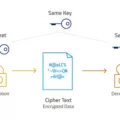When it comes to understanding the performance of your cloud services, two of the most popular options are AppDynamics and Splunk. Both tools offer robust features that help you monitor your cloud service performance in real-time, detect and troubleshoot issues, and streamline operations. So which one should you choose? Let’s take a closer look at AppDynamics vs Splunk to find out.
AppDynamics is an application performance monitoring (APM) solution that helps businesses understand how their applications are performing and where they can improve. Using AppDynamics, you can monitor throughput, transaction volume, application performance, health rules violations, and more. It also offers tools like Business iQ to build dashboards that automatically correlate application performance with business outcomes so IT teams can prioritize their work for maximum ROI.
Splunk is an IT operations analytics platform that provides users with insights into their data by collecting machine data from websites, applications, networks, servers, and more. With Splunk Add-on for AppDynamics, you can easily configure data inputs to pull data from AppDynamics’ REST APIs and use it to gain insights into your application performance. Additionally, Splunk APM is a powerful application performance monitoring solution for cloud-native microservices-based applications that use OpenTelemetry instrumentation to collect data from a wide range of programming languages and environments.
Overall both AppDynamics and Splunk offer robust features that help businesses monitor their cloud services in real-time and troubleshoot any issues quickly. While both have their strengths when it comes to monitoring application performance, the decision between them should be based on your individual needs – such as scalability requirements or budget constraints – so make sure you weigh all the options before making your choice.

Source: comparitech.com
Comparing AppDynamics and Splunk
AppDynamics and Splunk are two different tools used to monitor and manage cloud services. AppDynamics is a performance monitoring tool that allows users to monitor cloud service performance in real-time, as well as track throughput and transaction volumes. Splunk, on the other hand, is a cloud management tool that enables users to centrally manage cloud services, and hybrid services, and migrate cloud services from one location to another. Both tools provide valuable insights into the performance of cloud applications and services.
The Uses of AppDynamics Tool
AppDynamics is a powerful business intelligence tool used to gain valuable insights into the performance of applications and their impact on business objectives. It provides users with an easy-to-use dashboard that automatically correlates application performance metrics with business outcomes, allowing IT teams to prioritize their work in a way that can increase ROI. With AppDynamics, users can identify potential bottlenecks, track key performance indicators (KPIs), and monitor the health of applications in real time. This allows for proactive problem-solving before issues become critical, resulting in improved customer satisfaction, faster time to market, and increased revenue opportunities.
Integrating Splunk with AppDynamics
The Splunk Add-on for AppDynamics provides an easy way to integrate and monitor your AppDynamics data. It enables you to configure data inputs to retrieve performance metrics, health rule violations, and other application performance data from AppDynamics’ REST APIs. This integration allows you to harness the power of Splunk’s analytics capabilities for monitoring and troubleshooting your AppDynamics applications.
The integration also allows you to set up alerts based on the data retrieved from AppDynamics so that you can be notified when specific conditions are met or exceeded. With these alerts, you can take action quickly when issues arise, helping ensure your applications are running optimally.
Overall, Splunk’s integration with AppDynamics provides an efficient and effective way to monitor and analyze your application performance data in real time.
Is Splunk an Application Performance Management Tool?
Yes, Splunk is an Application Performance Monitoring (APM) tool that helps you monitor the performance of your cloud-native and microservices-based applications. It leverages open source and OpenTelemetry instrumentation to collect data from a variety of programming languages and environments, enabling you to easily identify performance bottlenecks, diagnose issues, and optimize performance.
Understanding AppDynamics: A Simple Explanation
AppDynamics is a comprehensive application performance monitoring tool that helps you get the most out of your applications. It gives you real-time visibility into the performance, health, and utilization of your applications, and helps you identify and diagnose problems quickly. It allows you to measure key business metrics, track API usage, monitor code-level issues and manage conversions. AppDynamics offers extensive capabilities to help ensure your applications are running at peak performance.
The Benefits of Using AppDynamics
AppDynamics provides a range of advantages for businesses to improve the performance of their applications. These include:
1. Enhanced visibility into application performance: AppDynamics offers detailed metrics on the performance of an application, such as response time and resource utilization. This helps businesses quickly identify and troubleshoot any issues they are facing with an application.
2. Automated problem detection and resolution: AppDynamics can detect any issues with an application and provide recommendations on how to resolve them. This helps businesses save time and energy when dealing with application issues.
3. Business transaction monitoring: AppDynamics allows businesses to monitor their applications in real-time, giving them an understanding of how their applications are performing at any given moment.
4. Advanced analytics capabilities: AppDynamics provides advanced analytics capabilities that allow businesses to gain insights into their applications and make decisions based on them.
5. Easy-to-use user interface: The user interface of AppDynamics is designed for ease of use, making it simple for businesses to manage their applications and monitor their performance without having to spend too much time learning about the product’s features or functionality.
Is AppDynamics a DevOps Tool?
Yes, AppDynamics is a DevOps tool. It helps developers and operations teams work together to improve quality and speed up the delivery of software. AppDynamics provides end-to-end visibility into your application environment, from the code running on the server all the way down to the user experience in the browser. This gives you real-time insights into how your applications are performing, allowing teams to quickly identify and fix any performance issues before they become bigger problems. With AppDynamics, teams can quickly identify which parts of their application need improvement or optimization, helping them deliver better quality faster.
The Benefits of Using Splunk
Splunk is an incredibly powerful tool for monitoring and searching through big data. It can be used to quickly index, correlate, and search massive amounts of data to generate reports, visualizations, and alerts. Splunk is most commonly used by organizations to monitor system logs, application performance metrics, security event data from firewalls and intrusion detection systems, web server traffic logs, and more. It can also be used for analyzing customer behavior on websites or mobile applications. With Splunk’s advanced search capabilities and interactive dashboards, users can easily identify trends within their data that would otherwise take days or weeks to uncover manually. Additionally, Splunk can be used to create automated triggers based on thresholds or patterns in the data that can alert administrators when something unexpected occurs.
Uses of Splunk
Splunk is a powerful tool for searching, monitoring, and analyzing machine-generated Big Data. It enables users to quickly identify patterns, trends, correlations, and other insights from large volumes of data. With its web-style interface and advanced search capabilities, Splunk allows users to quickly uncover hidden information in their data. It can be used for a variety of tasks including diagnosing server issues, monitoring application performance, tracking network devices, generating reports and dashboards to visualize data, detecting security threats and compliance violations, and much more. Splunk also offers real-time alerting capabilities so users can be notified when certain conditions are met in their data.
Does Amazon Utilize Splunk?
Yes, Amazon does use Splunk. Splunk is a cloud-based analytics platform that allows for security information and event management (SIEM). Amazon has integrated Splunk into its services to provide customers with a comprehensive solution for real-time security monitoring, detecting, and responding to ransomware threats. The combination of AWS and Splunk provides customers with a powerful platform for detecting suspicious activity, understanding current threats, and taking proactive measures to protect their data. Additionally, Splunk’s machine-learning capabilities help customers quickly identify anomalous behavior in their environment, allowing them to respond quickly and accurately.
Conclusion
In conclusion, AppDynamics and Splunk are both powerful tools used to monitor and manage cloud services. AppDynamics provides a comprehensive view of application performance, enabling IT teams to prioritize their work more effectively and improve ROI. Splunk offers an Add-on for AppDynamics which allows you to pull data from the AppDynamics REST APIs and configure data inputs easily. Additionally, Splunk APM is a sophisticated application performance monitoring and troubleshooting solution for cloud-native, microservices-based applications that collect data from a wide range of programming languages and environments. Both tools offer unique features that make it easier for users to monitor their cloud services, making them both excellent choices for businesses looking to improve their cloud performance.








